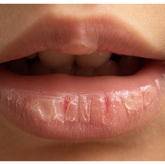Top Tips for Black and Brown Skin Care

As a parent, you want to make sure your child is happy and healthy. You can teach your child about drinking sufficient water, eating nutrient-rich foods, getting enough sleep, and exercising. But it is also essential for your child to have a skin care routine that addresses the specific needs of their melanin-rich skin.
Black and brown skin requires special attention and specially formulated skin care products. You can teach your child to maintain their skin health by using natural skin care for children. With these tips for black and brown skin care, your child can learn how to properly take care of their skin and boost their self-confidence.
Tips for Black and Brown Skin Care
Melanin is a pigment that makes your hair, eyes, and skin dark brown or black. Higher levels of melanin in your black skin provide protection from UV rays and decrease the risk of skin cancer. But increased melanin production also contributes to skin sensitivity and dry skin.
To keep your child’s skin healthy, you'll need to invest in the correct products and create routines using products made for melanin-rich skin. Using skin care for melanin-rich children to develop a routine can help prevent future problems with your child's melanin-rich skin.
1. Know Your Child’s Skin Type
To find the right melanin-rich skin nourishment, it is crucial to understand your child’s skin type. Knowing your child’s skin type enables you to select products that address their specific skin concerns.
Oily Skin
The pores secrete natural oils that keep your skin hydrated to combat dryness. Oily skin types still need to moisturize daily to prevent excess sebum production, but they need a lightweight product that won’t clog their pores. Look for formulas with oils high in linoleic acid and other mild emollients.
Sensitive Skin
Sensitive skin is frequently prone to dryness and itching. Bathing sensitive skin often results in it feeling clean and dry. pH-balanced skin care formulas are the best option for sensitive skin and products with humectant ingredients to draw in and trap moisture in the skin.
Dry Skin
The skin will feel tight and dry if it lacks the necessary ingredients to retain moisture. Flaky patches and cracks are common for this skin type during the winter months. Dry skin needs creamier moisturizers with occlusive ingredients that form a protective barrier on the skin.
Combination Skin
This skin type has a combination of oily and dry patches on the face. It is prone to drastic seasonal changes, with oiliness in summer and dryness during winter.
2. Use Sunscreen Regularly
A high level of UV exposure can overstimulate melanin-producing cells, leading to dark spots and uneven skin tone. When your child has bug bites, scars, or acne, they can turn into post-inflammatory hyperpigmentation or discolored spots on their skin.
Wearing sunscreen regularly can mean fewer dark spots, a brighter complexion, and an even skin tone. Your child wearing sunscreen can also foster the habit of putting on sunscreen regularly to prevent skin issues later in life.
Melasma is a common skin condition among women of color, especially Black women between the ages of 20 to 40. Wearing sunscreen can reduce the intensity of melasma by 50%.
Another important preventable skin issue is skin cancer. A study has found that Black people with skin cancer are more likely to die because of a lack of understanding and access to medical resources.
According to the American Academy of Dermatology, you and your child should use sunscreen every day, even on cloudy days, with an SPF of 30 or higher. Chemical sunscreens are safe to use because they turn UV light to heat and don't leave a white residue (white cast).
3. Wash with a Gentle Cleanser
People who have oily skin or acne may be tempted to use harsh, soap-based cleansers to help with their skin issues. Using these cleansers can also harm sensitive skin due to their harsh ingredients. Because of the amount of melanin, darker skin tends to dehydrate, resulting in problems such as dryness and flaking that can lead to further breakouts.
Use mild cleaners on your child. The cleanser should gently remove dirt and excess oil from the skin without stripping it of natural oils. Your child can learn to wash their face twice a day, once in the morning and again before bedtime. To prevent breakouts, you can have them gently wash their faces with their fingers or with a clean washcloth in small circular motions.
4. Apply a Moisture-Rich Lotion
Keeping your skin moisturized will not only keep it healthy, but it's an excellent way to avoid dryness. It is especially important to moisturize immediately after bathing or showering to lock in the water.
It is helpful to look for natural skin products that contain beneficial ingredients for melanin-rich skin, such as aloe vera, jojoba oil, cocoa butter, and shea butter. You can also look for moisturizing lotions that contain hyaluronic acids and ceramides that can protect the skin’s natural barrier. For melanin-rich skin, you may want to look for a skin care solution that can meet all your child’s needs.
5. Address Hyperpigmentation
Using skin care products that contain perfumes, artificial dyes, and other chemicals can cause your skin to become irritated, resulting in hyperpigmentation. Skin care for melanin-rich skin should contain simple ingredients to allow the skin to be gently moisturized without irritation, such as shea butter, coconut oil, and aloe vera.
You can also look for Vitamin C as it can help brighten your child’s melanin-rich skin tone while also improving its health. It can heal wounds, make your skin look better, help you stay safe in the sun, and protect you from pollution. It can also reduce the appearance of dark spots from forming on your skin.
Use Proper Skin Care for Your Child
Getting your child involved in a skin care routine early on can help to protect their skin and prevent future problems. You can consult a dermatologist for more information on how to use skin care products for melanin-rich children.
It can be a confidence booster to set up a skin care routine with your child that addresses the main concerns of melanin-rich skin. These skin care tips for brown and black hues can help your child enjoy their skin and be happy with the way it looks.






